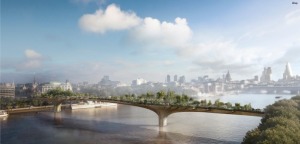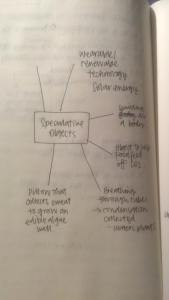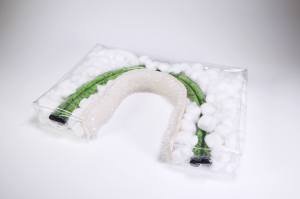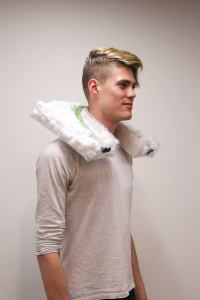Interdisciplinary LAB A takes you out of the realm of design thinking and into a more complex matter. Thinking about the future and creating scenarios based on our own research as well as the lectures given through topics about the Anthropocene, Big Data, Human Technology Interaction and Design at the Border has helped in viewing the future differently. As a group James, Angela, Marie and I brain stormed our scenario towards the idea of technology focused on research and development rather than communications, food abundance or scarcity and urban and green living.
The research for our scenario helped lead towards our ideas, ideas like creating urban farming similar to the indoor farm in Japan. As our scenario of green living is further highlighted in an article by Tom Armour in which he states, “Sustainable urban development, which is integrated with technology, is the answer“(2014). As a Director for Global Landscape Architecture with Arup, Armour suggests a future in very similar ideas as the group. A future where technological developments help with sustainable living as well as the population increasing resulting in high food demands turning into alternative methods to meet these demands.
Formulating our future scenario, we also had to design a suitable speculative object that integrates with our scenario. Designing the prototype taught me to think about the future of design and how to approach a design that connects with future possibilities. Our speculative object looked to the prospect of creating algae through human sweat, which is collected pass a series of filters and into a tube all designed into a pillow. Algae can be seen as the future food source, with food demands high alternative measures will be needed to feed the growing populations. Dr John Finley a professor of food science states, “Forty years isn’t very long to get there. We can’t do it with traditional agriculture alone. Microalgae has incredible nutritional value. Ultimately, it’s just an environmentally clean way to produce quality food.” (J.Finley 2014). Our object focused on creating an alternative method of producing food sustainably and organically. It was important for not only finding alternative foods but also foods that supply the nutrients needed in the future. In creating a sustainable food production, other solutions can be made towards a sustainable and ecological living.
The vision for the future is a sustainable one, “ There is certainly no ‘one size fits all’ solution, but there are strategies and actions that have the commonality…” (Jenks & Dempsey, 2005). Our scenario and speculative object aimed for a brighter future and alternative solutions. The actions of older generations cannot be changed, but in creating solutions to work towards a sustainable and ecological future is possible. With many possibilities of inventions and innovation through technology the future is looking brighter.
Reference:
Weiss, A. (2014). ‘Food of Future Past: Want sustainability? Eat Algae..’ Online. Solazyme. Viewed on 28 October : http://solazyme.com/blog/2014/09/08/food-future-past-want-sustainable-future-eat-algae/?lang=en
Armour, T. (2015). ‘The future of our cities lies in the technology – ecology balance’. Online, The Information Daily.com. Viewed on 28 October: http://www.theinformationdaily.com/2014/05/07/the-future-of-our-cities-lies-in-the-technology-ecology-balance
Ronald, P. and Adamchak, R. (2010), ‘The future of sustainable food production’. Annals of the New York Academy of Sciences, 1190: 184–185. Viewed on 28 October: http://onlinelibrary.wiley.com.ezproxy.lib.uts.edu.au/doi/10.1111/j.1749-6632.2009.05261.x/full
Jenks, M. and Dempsey, N. (2005). ‘Future forms and design for sustainable cities’. Amsterdam: Architectural Press. Pp. 415





Yes, I think sustainable development and integration with technology is so important. Definetely agree that our prototype object is a small step towards this! – Angela
LikeLike